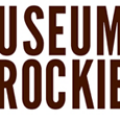Julius Caesar: Military Genius & Mighty Machines Opens
If we could travel back in time and visit Ancient Rome, we would be very surprised to see how many aspects of our society resemble those of 2,000 years ago. We would learn that we have inherited from this great Empire many of the objects, concepts, technologies, and machines that are part of our contemporary life.
It has been said that the Romans copied, or at least were greatly influenced by Alexandrine Science (that Greek-Hellenistic revolution sparked by Alexander the Great, circa 300-100 B.C.E.). However, it is thanks to the socioeconomic conditions created during the Roman Empire and the Romans’ shrewd, selective adaptations of that knowledge that have allowed the spread and preservation of many “ancient technologies” to us.
Julius Caesar: Military Genius & Mighty Machines was born from the desire to recreate this fascinating period of history, as realistically as possible, to explore and experience the mighty machines, gadgets, and clever technologies of the Roman Empire.
Showcasing over 100 interactive machines, virtual reality displays, reconstructed scaled models, recreated artwork and frescoes the exhibition is presented covering four themes:
- Military Genius: The machines are interactive, reconstructed to scale by the Niccolai Teknoart Artisans, using only materials available in Roman times. Follow the exploits of Gaius Julius Caesar, reformer (inventor), military and political leader, and who played a crucial role in the transition from a republican system of government to an imperial one. Through the conquest of Gaul, Caesar expanded the Roman “res publica” from Egypt to the Atlantic Ocean and led the Roman armies to the first invasions in the written history of Britain and Germany.
- All Roads Lead To Rome: The Romans understood physics and excelled at controlling natural resources (the aqueduct), and used the abacus to manage their finances. To communicate with and better administrate (control) their multi-ethnic populations in such a vast Empire, they adopted a sophisticated strategy of propaganda images, which we now refer to as Public Relations or even “Spin”.
- Building Rome: The Roman Empire was in a state of constant expansion. Engaging in large-scale construction projects, from roads and bridges to baths houses and majestic monuments such as the Roman Arch that was symbolic of the Empire’s greatness. What made these feats of construction engineering so remarkable and durable was the sophisticated Roman use of construction materials. Inventions like cement, glass windows and large-scale production of an incredible variety of brick and marble products are examples of such.
- Entertainment and Lifestyle: They built amphitheaters (the Oval Arena is their invention) to host gladiatorial games, their favorite sporting event. The Colosseum is one of the world’s most famous monuments. This stadium, technologically advanced even by today’s standards, was fitted with features such as the velarium, the vomitoria, lifts, turning platforms, and turnstiles. The skilled Teknoart artisans have meticulously reconstructed these features to scale, and have even recreated the gladiators in their dramatic final act. Other forms of entertainment and lifestyle are examined (gambling with dice, playing with dolls and fast foods). In fact, Roman citizens enjoyed a busy calendar of religious rites and social events aided by gadgets such as pocket sundials and personal “notebooks."
Journey back in time 2,000 years to discover the life, culture, and engineering genius that was created by Roman Empire. Handcrafted by Italian artists, this exhibition contains interactive models that integrate science and history. Museum guests are encouraged to explore the innovative machines that continue to influence the technologies of today.
Cost: Free with admission
Time(s)
This event is over.
Sat. Feb. 17, 2018 9am
Location
 Museum of the Rockies
Museum of the Rockies600 West Kagy Boulevard
Bozeman, MT 59717
(406) 994-2251
museumoftherockies.org